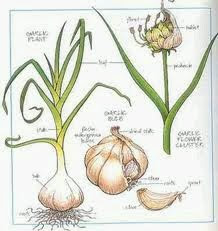One of my favorite fall recipes is this one for Butternut & Sage pizza. You can substitute any winter squash for the butternut. Consider adding roasted peppers, sauteed kale or mushrooms for added variety!
Butternut Squash and Sage Pizza
½ tsp active dry yeast
 pinch of sugar
pinch of sugar4 cups white bread flour
1 tsp salt
4 tablespoons olive oil
1 tablespoon butter
2 shallots, finely chopped
1 butternut squash, peeled, seeded and cubed, about 1 pound prepared weight
16 sage leaves
2 x 14-ounce cans chunky tomato sauce
4 ounces mozzarella cheese, sliced
4 ounces goat cheese
salt & freshly ground black pepper
1. Put ½ cups warm water in a measuring cup. Add the yeast & sugar and let sit for 5 to 10 minutes, until the mixture is frothy.
2. Sift the flour & salt into a large bowl and make a well in the center. Gradually pour in the yeast mixture and 2 tablespoons of olive oil. Mix to make a smooth dough. Knead on a lightly floured surface for about 10 minutes, until smooth, springy & elastic. Place the dough in a floured bowl, cover and let rise in a warm place for 1 ½ hours.
3. Preheat the oven to 400 degrees F. Oil four baking sheets. Put butter and 2 tablespoons olive oil in a roasting pan and heat in the oven for a few minutes. Add the shallots, squash and half the sage leaves. Toss to coat. Roast for 15 to 20 minutes, until tender.
4. Raise the oven temperature to 425 degrees F. Divide the dough into four equal pieces and roll out each piece on a floured surface to a 10-inch round
5. Transfer each round to a baking sheet and spread with tomato sauce, leaving a ½ inch border all around. Spoon the squash & shallot mixture over the top.
6. Arrange to mozzarella over the squash mixture and crumble the goat cheese on top. Sprinkle with teh remaining sage leaves and season with plenty of salt & pepper. Bake for 15 – 20 minutes until the cheese has melted and the crusts are golden.














